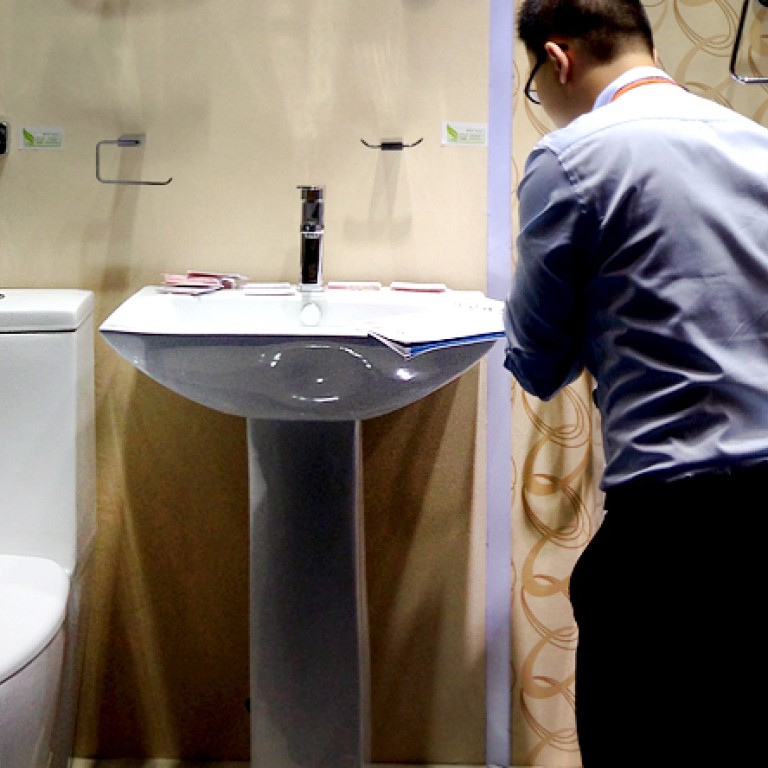
Higher quality trumps higher prices at Canton Fair
Nikola Cubrilo settles for a higher price for a set of bathroom water hoses at the Canton Fair in Guangzhou, satisfied with the marked improvement in the product he used to source in the past few years.
Touching the shiny stainless steel water hose on the display wall, the importer from Serbia is impressed with the improved finishing materials and feels that a 3-5 per cent increase in prices is “acceptable”.
Cubrilo was among nearly a dozen buyers the South China Morning Post talked to at the opening of the 115th China Import and Export Fair on Tuesday. It will run until May 5 in three phases.
The Canton Fair is the mainland’s largest trade show, held every spring and autumn for the past 57 years. Last year’s spring fair attracted about 202,000 buyers and generated US$35.5 billion (HK$219 billion) in transactions.
The hard bargaining over prices seen at the previous Canton Fair was less evident this year, in view of the higher-quality products and a wider range of new models, according to some buyers.
“Products are of better quality, but of course they are more expensive,” said New Zealand-based importer, Tim Peters, who was looking for gardening and building materials.
“It’s true there are cheaper products in Thailand and Vietnam, but the quality is poorer for the type of products I source.
“China is still a top sourcing destination.”
“Prices are about 10 per cent higher this time than three years ago, when I first came to the trade fair,” said 24-year-old Russian entrepreneur, Konstantin Efremov, who started on his path to fortune by sourcing about 500 bicycles for Russia at the fair.
“But quality is better, and the [Russian] market is prospering and will be able to digest some price rises.”
Many suppliers regarded the significant improvement in product quality as the fruit of the industrial reform since 2007 in the Pearl River Delta (PRD), “the factory of the world”.
As part of a nationwide policy, Guangdong was leading the reform by phasing out manufacturing activity deemed overly labour-intensive, resource-consuming or pollution-inducing.
It’s true there are cheaper products in Thailand and Vietnam, but the quality is poorer for the type of products I source
Manufacturers that mostly thrived on low-cost production for the top export markets of the United States and European Union were either forced to move up the technology ladder and value chain or relocate to remote parts of the mainland or even outside the country.
Shenzhen-based bathroom vanities maker Yekalon Industry, which is exhibiting at the fair, is one example of the winners that have emerged in the battle for the survival of the fittest.
Sniffing the winds of industrial reform, the company made a pre-emptive move in 2005 by transforming itself from a low-value exporter into a one-stop provider of bathroom vanities – from design, manufacturing, research and development of new products to installation services, vice-president Lily Wang said.
Relinquishing its decades-long expertise in production, the company has outsourced manufacturing to about 150 factories in southern and eastern China and focused on research and development, she said.
On average, it reinvests about 5 per cent of its revenue every year in developing technologies and new products, Wang said.
The vertically integrated business model has helped cushion Yekalon from the adverse impact of yuan appreciation on the demand for its products, as it has been able to earn revenue from services such as consultation and design, she said.
“Yuan has kept strengthening against the US dollar in the past few years, except recently,” she said. “The currency risks are one of the factors, including higher wages and material costs, we are facing.”
“The new business model has worked well so far,” Wang said. “But the market changes constantly, which means we need to modify our business model constantly, too.”
Since the company’s transformation, its geographical scope has widened from Southeast Asia to Eastern Europe, the Middle East and major cities of the mainland, she said.
The company is seeking to expand into online-to-offline services, which means it wants to devise an internet platform that will connect it with potential buyers instead of trading through the mainland’s largest business-to-business portal, Alibaba.
A recent poll of about 200 Hong Kong manufacturers operating in the PRD by the Federation of Hong Kong Industries showed about two-thirds are keeping their factories in the PRD.
It said the remaining one-third planned to move out of the PRD and to remoter parts of the mainland.
Federation chairman Stanley Lau Chin-ho said operating costs jumped about 12 per cent this year from last year, driven by a roughly 12 per cent jump in wages.
“The operating environment is still very difficult,” he said. “Many manufacturers are cautiously optimistic about future prospects, as there are signs the US economy is recovering faster and the European Union is emerging from recession.”

